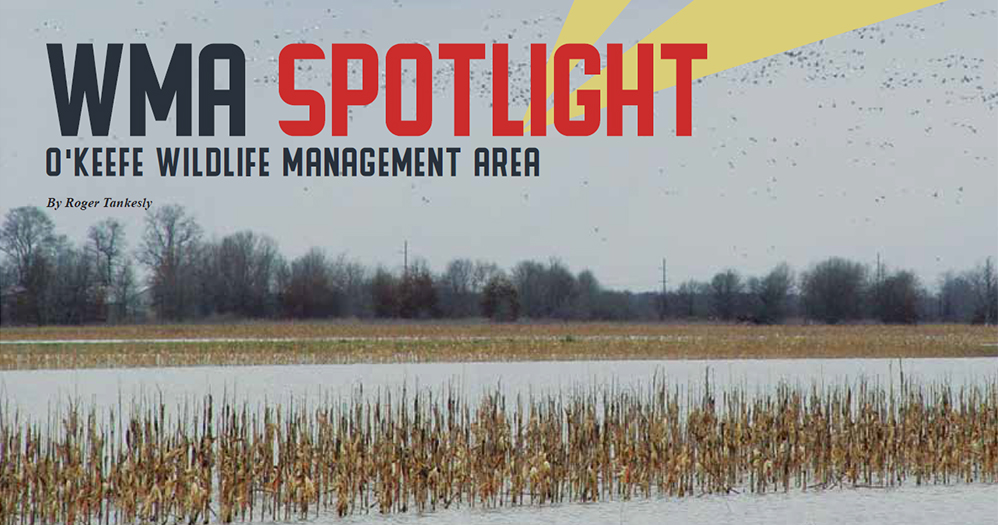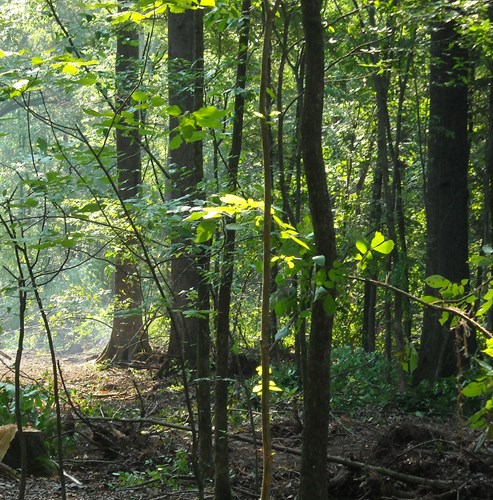WMA Spotlight: O'Keefe Wildlife Management Area
8/10/2018 2:19:30 PM
By Roger Tankesly

Location
O’Keefe Wildlife Management Area (WMA) is a 5,919-acre, state-owned WMA located three miles south of Lambert in Quitman and Tallahatchie counties. Mississippi Department of Wildlife, Fisheries, and Parks (MDWFP) manages the O’Keefe WMA to provide sustainable wildlife-oriented recreational opportunities to the public.
History
In 2001, the area was purchased by MDWFP from the Mississippi Department of Corrections. Before buying the property, MDWFP leased the area for public hunting opportunities. O’Keefe WMA also adjoins a 380-acre tract owned by the U.S. Fish and Wildlife Service along its eastern boundary, which recently has been added to the WMA for recreational opportunities.
Lay of the Land
The WMA falls within the Delta physiographical region of the state. The topography of the area is flat, and it contains heavy clay soils that drain poorly. The significant drains for the area are Muddy and Opossum bayous that traverse the center of the WMA.
Wildlife Habitat
O’Keefe WMA is one of the largest remaining contiguous blocks of bottomland hardwood forest remaining outside of the Mississippi River Levee system. The area contains 4,374 acres of mature bottomland hardwood forest. Primary hardwood species found are water oak, willow oak, cherry bark oak, swamp chestnut oak, overcup oak, nuttall oak, bitter pecan, elm, ash, sweetgum, sugarberry, hickory, locust, and persimmon. For many years, forest stand conditions on O’Keefe WMA were poor from both wildlife habitat and healthy forest perspectives. Forest disturbance had been absent since 1994 when a catastrophic ice storm hit, resulting in significant timber damage.

In 2011, MDWFP initiated a new ecologically based forest management program that focuses on providing quality wildlife habitat.
Bottomland forests began being managed to optimize wildlife habitat and promote healthy forests by using variable retention harvest methods as recommended by the Lower Mississippi Valley Joint Venture Forest Resource Conservation Working Group. Native wildlife populations have increased because of increased food and cover availability within the forest. MDWFP manages approximately 250 acres of floodable, moist-soil habitat, which is an important habitat for wintering waterfowl, wading birds, shorebirds, and neotropical migrant songbirds. Bald eagles often are seen while visiting O’Keefe WMA.
Hunting Opportunities
O’Keefe WMA is not only made up of mature bottomland hardwoods, but also has productive agricultural fields, retired agricultural fields in which hard-wood species were re-planted, and managed wildlife openings. The agricultural fields are leased annually to a farmer for production farming. Soybeans, corn, rice, and milo are planted and a percentage of standing crops is left in the fields for wintering waterfowl food. The retired agricultural fields were reforested in 2005 and provide an excellent deer, small game, and quail habitat.
O’Keefe WMA also provides a diverse habitat for wintering waterfowl in the form of a green-tree reservoir (GTR) complex. The GTR is divided into three sections that allow for a three-year flood rotation. These areas provide flooded bottomland hardwoods, which have an important role in both providing a food source as well as cover for wintering waterfowl.
For More Information
Visitors to O’Keefe WMA should be familiar with the current regulations. All visitors, unless exempt from purchasing an annual hunting or fishing license, must possess a valid WMA User Permit. Like most WMAs, the majority of visitors to O’Keefe WMA come for hunting.
For more information on O’Keefe or any other WMA in Mississippi, visit: www.mdwfp.com/wildlife-hunting/wma or contact the MDWFP Wildlife Bureau at (601) 432-2199.
Roger Tankesly is the Delta WMA Biologist for MDWFP.









